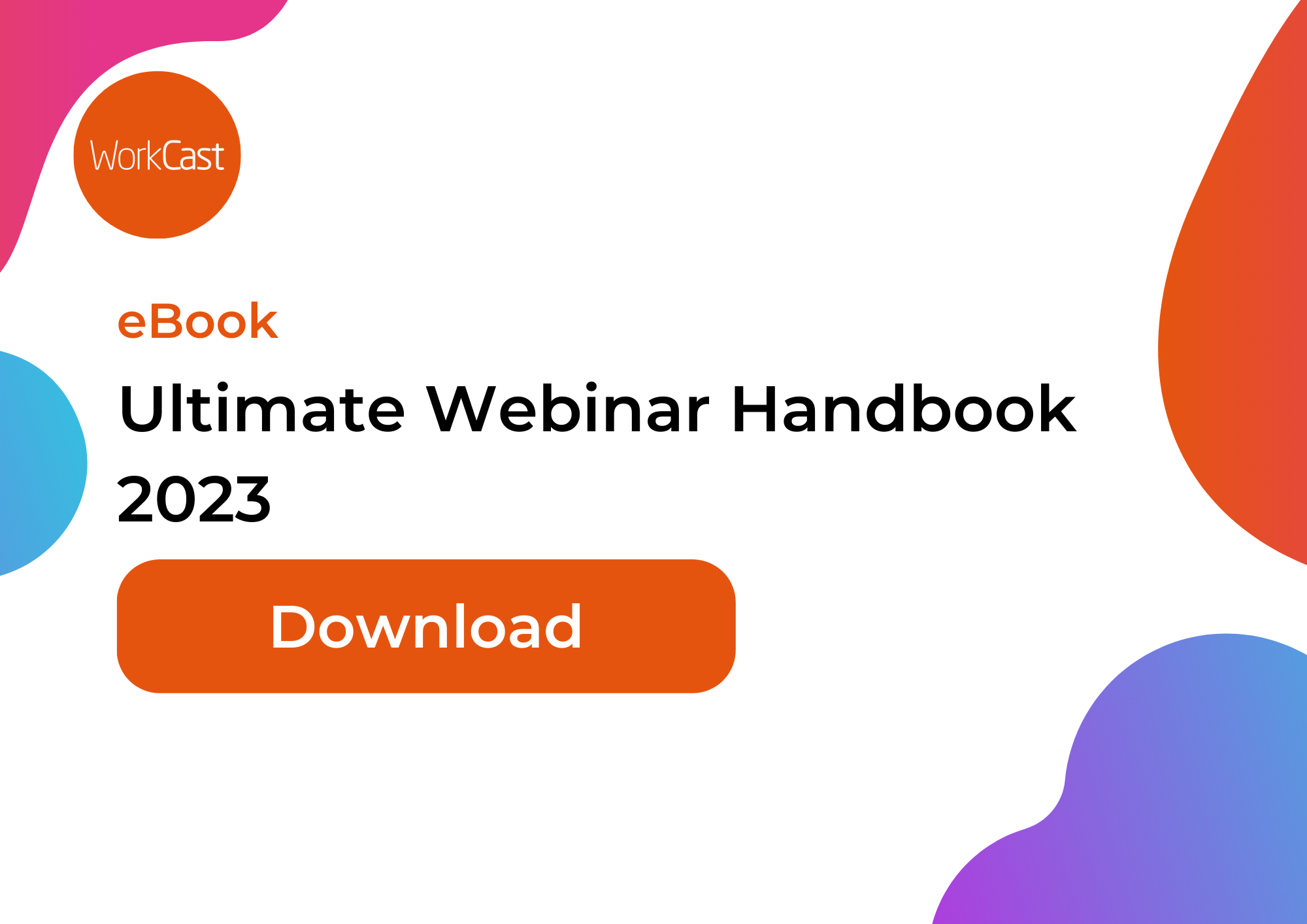Introduction to Webinar Data
Webinars have become an increasingly popular tool for businesses to connect with their audience, share valuable information, and generate leads. But did you know that webinars also offer a wealth of data that can be harnessed to drive success? In this article, we will explore the power of webinar data and how you can make the most of the best insights to propel your business forward.
The Importance of Webinar Data for Business Success
Webinar data is a goldmine of information that can provide valuable insights into your audience, content effectiveness, and overall webinar performance. By analyzing this data, you can better understand your audience's needs and preferences, identify areas for improvement, and make data-driven decisions to enhance your future webinars.
One of the key advantages of webinar data is the ability to track attendee engagement. You can see who attended your webinar, how long they stayed, and which parts of the presentation resonated with them the most. This information allows you to tailor your content to meet the specific interests of your audience, ensuring you deliver valuable and engaging webinars every time.
Key Insights and Metrics to Look for in Webinar Data
When analyzing webinar data, there are several key insights and metrics that you should pay attention to. These include:
-
Attendance Rate: This metric indicates the percentage of registered attendees who actually participated in the webinar. A high attendance rate suggests strong interest in your topic and effective promotion strategies.
-
Engagement Duration: By looking at the average time attendees spent in your webinar, you can gauge how captivating your content was. Longer engagement durations indicate a high level of interest and attentiveness.
-
Poll and Survey Responses: Polls and surveys are valuable tools for gathering feedback and understanding your audience. Analyzing the responses can help you identify common pain points, preferences, and areas for improvement.
-
Conversion Rate: If your webinar includes a call-to-action, such as signing up for a newsletter or purchasing a product, tracking the conversion rate can give you insights into the effectiveness of your webinar in driving desired actions.
By paying attention to these metrics, you can gain a comprehensive understanding of your webinar's performance and make data-driven decisions to improve future webinars.
Analyzing and Interpreting Webinar Data
Analyzing and interpreting webinar data is an essential step in harnessing its potential. Start by organizing your data in a clear and structured format, making it easier to identify patterns and trends. Visualizations such as charts and graphs can be particularly helpful in presenting the data in a digestible format.
When interpreting the data, ask yourself key questions such as: What are the common themes in attendee feedback? Which parts of the presentation received the highest engagement? Are there any demographic trends among the attendees? By answering these questions, you can uncover valuable insights that can inform your future webinar strategies.
It's also essential to compare your webinar data with your goals and objectives. Did your webinar meet its intended purpose? Did it generate the desired engagement and conversions? By aligning your data analysis with your goals, you can assess the success of your webinars and make informed decisions for improvement.
Using Webinar Data to Improve Future Webinars
Webinar data is not just about analyzing past performance; it's about using that data to improve future webinars. Armed with insights from your data analysis, you can make data-driven decisions to enhance your webinar content, delivery, and overall experience.
Start by identifying the areas for improvement highlighted by your data. For example, if attendees consistently dropped off after a certain point in the webinar, you can revisit that section and make it more engaging or concise. If a particular topic received high engagement, consider expanding on it in future webinars or creating related content to further engage your audience.
Additionally, use attendee feedback to guide your content creation process. Take note of the common pain points and questions raised during the webinar and address them in future presentations. By tailoring your content to meet the specific needs of your audience, you can ensure that your webinars deliver maximum value and resonate with your viewers.
Leveraging Webinar Data for Marketing and Sales
Webinar data can also be a powerful tool for your marketing and sales efforts. By understanding your audience's preferences and interests, you can tailor your messaging and promotional strategies to attract more qualified leads and convert them into customers.
For example, if your webinar data reveals that a particular industry or demographic group has shown high engagement and conversion rates, you can create targeted marketing campaigns to reach similar audiences. You can also use the insights gained from your webinars to inform your content marketing strategy, creating blog posts, videos, or social media content that aligns with your audience's interests.
Furthermore, webinar data can provide valuable insights into your sales funnel. By tracking conversions and analyzing attendee behaviour, you can identify potential bottlenecks or areas where you can optimize your sales process. This data-driven approach can help you streamline your sales efforts and maximize your conversion rates.
Tools and Software for Webinar Data Analysis
To effectively harness the potential of webinar data, it's important to have the right tools and software at your disposal. Here are a few popular options:
-
Google Analytics: While primarily used for website analytics, Google Analytics can also be used to track and analyze webinar data. It provides valuable insights into attendee behaviour, conversion rates, and other key metrics.
-
Webinar Platforms: Many webinar platforms offer built-in analytics and reporting features. These platforms allow you to track attendee engagement, poll responses, and other important data points. Depending on budget, examples include us (of course 😉) Zoom, GoToWebinar, and WebinarJam.
-
CRM Systems: Customer Relationship Management (CRM) systems such as Salesforce or HubSpot can integrate with webinar platforms, allowing you to track attendee data, conversions, and engagement within your existing CRM system.
By leveraging these tools and software, you can streamline your webinar data analysis process and gain actionable insights to drive your business forward.
Best Practices for Collecting and Managing Webinar Data
Collecting and managing webinar data requires a systematic approach to ensure accuracy and consistency. Here are some best practices to consider:
-
Set Clear Objectives: Before hosting a webinar, clearly define your objectives and the data you want to collect. This will help you focus your data collection efforts and ensure you gather the most relevant information.
-
Use Registration Forms: Require attendees to fill out a registration form before accessing your webinar. This will not only provide you with attendee contact information but also help you gather demographic data for analysis.
-
Utilize Polls and Surveys: Incorporate polls and surveys throughout your webinar to gather real-time feedback. This will allow you to gather insights and address attendee preferences immediately.
-
Integrate with CRM Systems: Integrate your webinar platform with your CRM system to ensure seamless data transfer and a holistic view of your attendees' journey.
-
Regularly Review and Update Data: Keep your webinar data up to date by regularly reviewing and updating your records. This will ensure the accuracy and reliability of your data analysis.
By following these best practices, you can collect and manage webinar data effectively and make informed decisions based on reliable insights.
Conclusion: Harnessing the Potential of Webinar Data for Success
Webinar data holds immense potential for businesses looking to drive success in today's digital landscape. By analyzing and interpreting this data, you can gain valuable insights into your audience, enhance your future webinars, and inform your marketing and sales strategies.
Remember to use the right tools and software to streamline your data analysis process. Set clear objectives, collect data systematically, and regularly review and update your records to ensure accuracy.
Request a Demo now to explore how webinar data gathered for you by WorkCast can transform your business and propel you towards your goals. Don't miss out on the opportunity to harness the power of webinar data – it's time to unlock its full potential!
Share this
You May Also Like
These Related Stories

Salesforce Integrations

But What Does It All Mean: A Comprehensive Webinar Glossary



